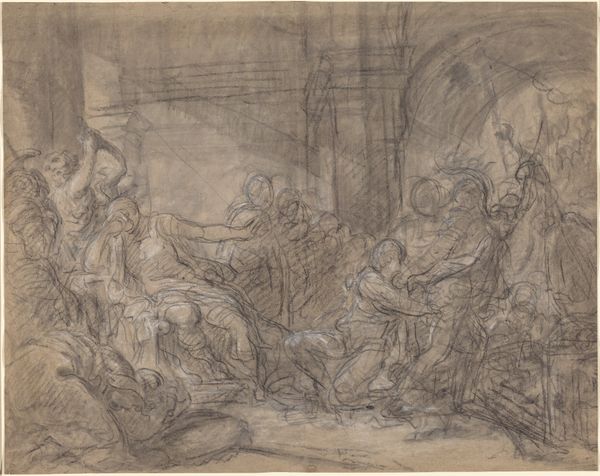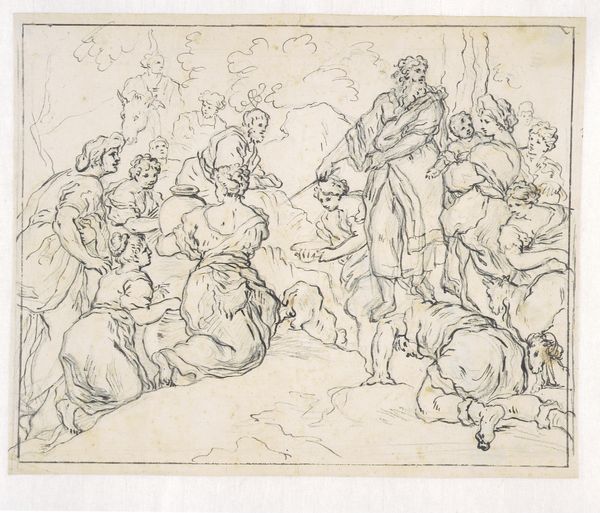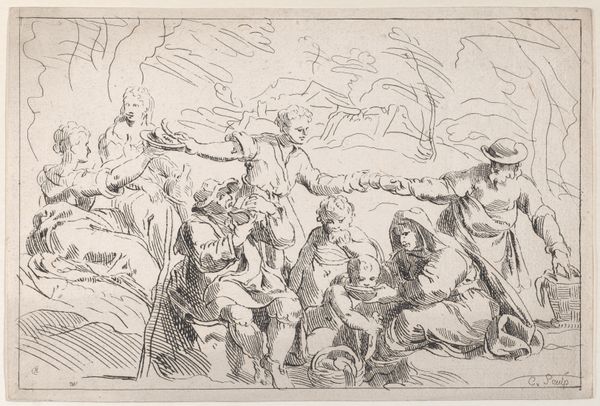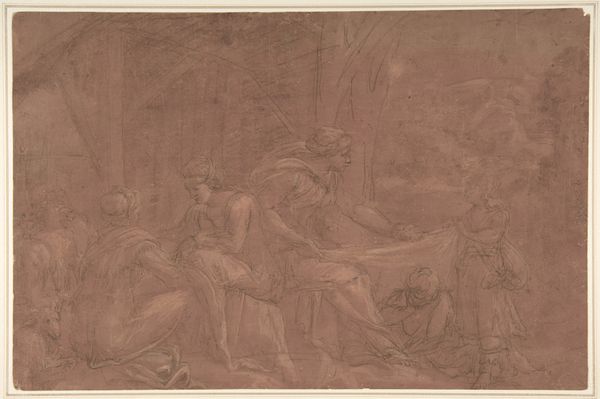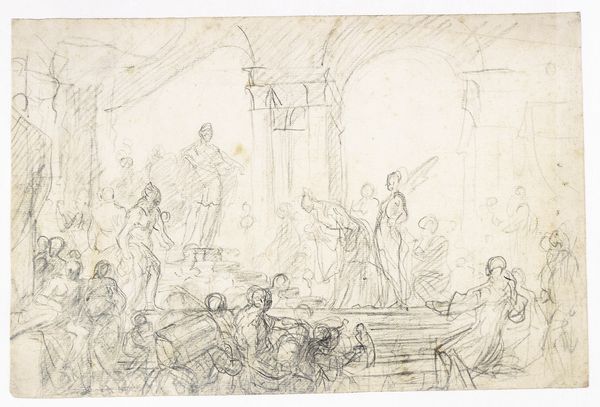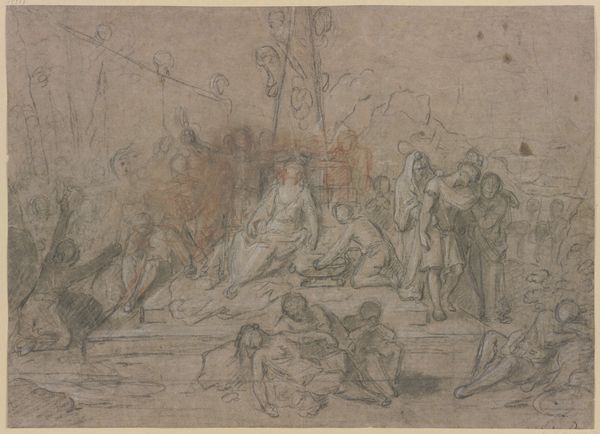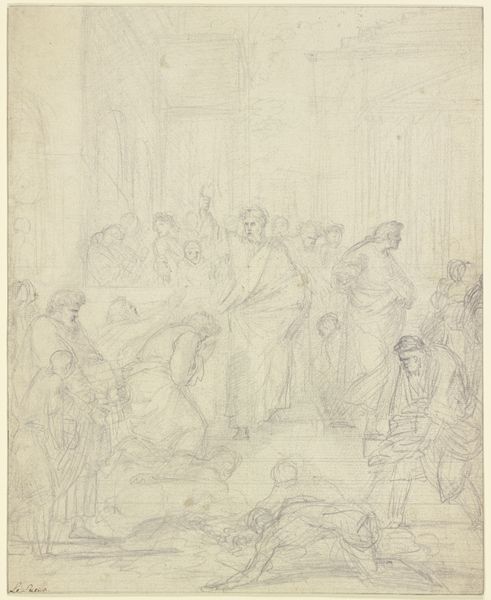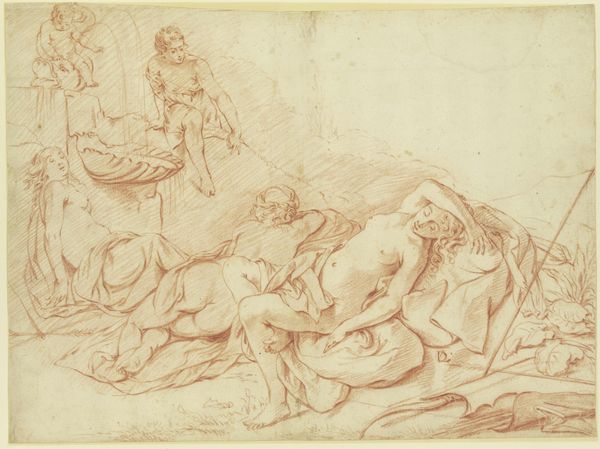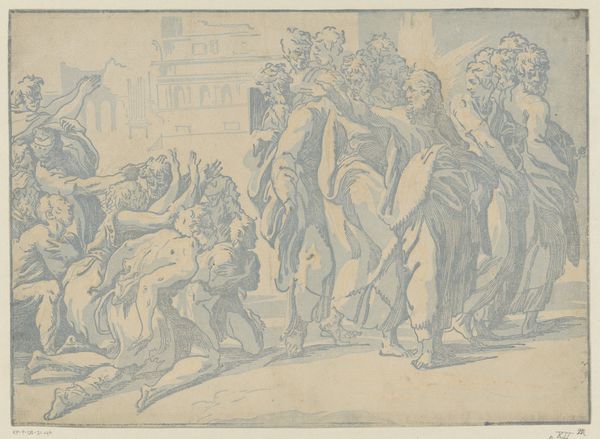
Christ curing a sick man, or The Raising of Lazarus 1820s - 1830s
0:00
0:00
drawing, ink, pen
#
drawing
#
ink drawing
#
ink painting
#
pen sketch
#
figuration
#
ink
#
romanticism
#
pen
#
history-painting
Dimensions: 245 mm (height) x 354 mm (width) (billedmaal)
Curator: William Hilton's "Christ curing a sick man, or The Raising of Lazarus," dating from the 1820s to 1830s, rendered in ink, catches the eye. Editor: The scene feels so raw, like looking at the foundations of an epic. I'm struck by the dynamic composition, the frenetic lines suggesting energy and urgency around what looks like a miracle unfolding. Curator: Indeed, that sense of immediacy is a hallmark of Romanticism. Hilton clearly aims to capture the drama of the biblical narrative. Note how he employs figuration in a history-painting context. Consider also the historical underpinnings influencing how the raising of Lazarus became so powerfully and regularly visualized in the broader visual culture of the period. Editor: What’s fascinating is how these symbols continue to hold power, even for secular viewers. The outstretched hands, the weeping woman... They speak to universal anxieties surrounding mortality and the desperate hope for intervention. It's almost primal. Curator: Precisely. Those repeated gestures underscore the desperation and hope central to the story. In a historical perspective, such depictions, disseminated via prints and paintings, reinforced faith and moral instruction throughout society. The image itself serves as an icon of hope and salvation. Editor: But it’s interesting that even in its sketch-like state, it stirs up questions. Was it intended to depict real events, and if so how were people at that time actually viewing disability and access to healthcare? It opens a portal into examining evolving societal perceptions of well-being. Curator: That touches on a key issue. It's critical to unpack how art contributes to normalizing beliefs and behaviors. Art shapes, reinforces, and sometimes even subtly challenges those beliefs, offering glimpses into alternative ideals or perspectives. Editor: Right. By focusing on these visual representations of hope, faith, and societal structures, Hilton indirectly documents his world, as much as illustrating what came before it. Curator: Absolutely, a careful analysis reveals as much about Hilton’s time as about the New Testament. Understanding the societal and political dynamics helps one truly comprehend the intention and reverberations of such an emotionally loaded pen sketch. Editor: Thank you; a very rich view on faith, social symbolism, and of course this unique rendering of this biblical miracle.
Comments
No comments
Be the first to comment and join the conversation on the ultimate creative platform.
